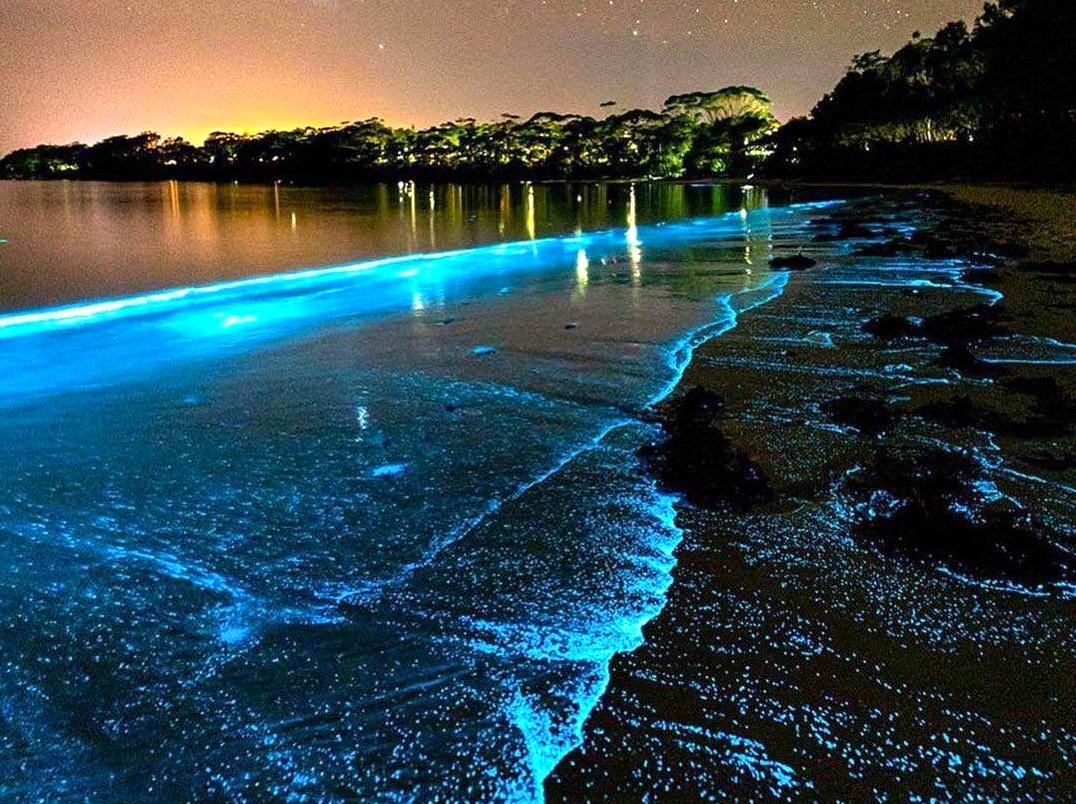Karlu Karlu (Devils Marbles) is a iconic landmark and one of Australia’s most beautiful rock formations. In Central Australia this is a must see for those who love the outback. The massive boulders weathered over millions of years create a surreal landscape. But Karlu Karlu is more than just a natural wonder, it’s a culturally significant site for Aboriginal people and part of their spiritual and sacred sites.
What’s Special About Karlu Karlu?
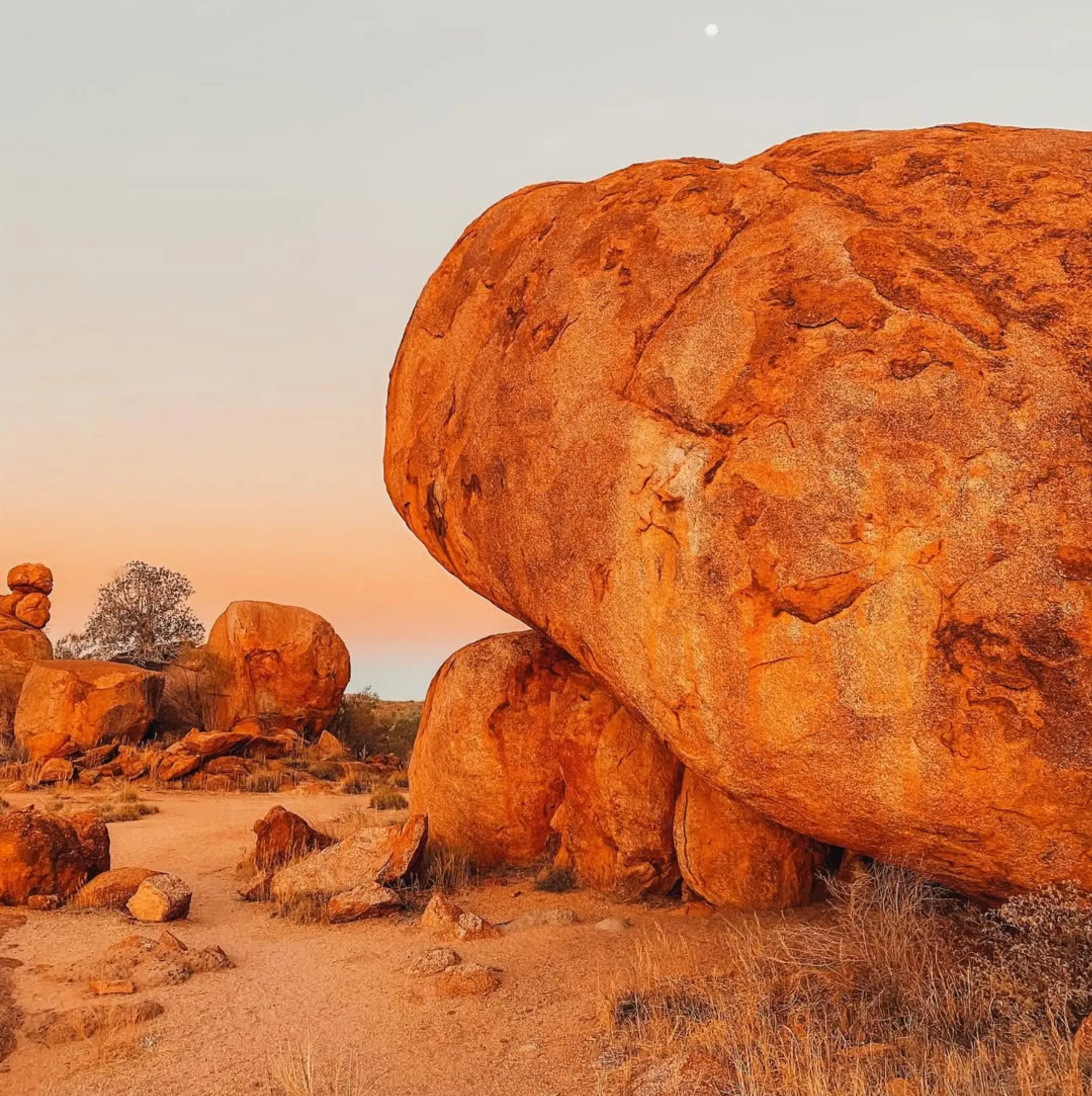
Karlu Karlu is a scattering of ancient granite boulders on a sandy plain. The giant boulders, some precariously balanced or in boulder fields, are geological wonders. The coarse-grained igneous rock in these formations is millions of years old and features a fascinating mix of granite rocks with red to pink hues. The rounded granite boulders sit on top of sandstone layers that have been shaped over time by pressure, water, and weathering.
For an unforgettable journey through Australia’s stunning landscapes, consider a 3 day Uluru tour or an Uluru tour to explore these incredible natural formations.
Cultural Heritage
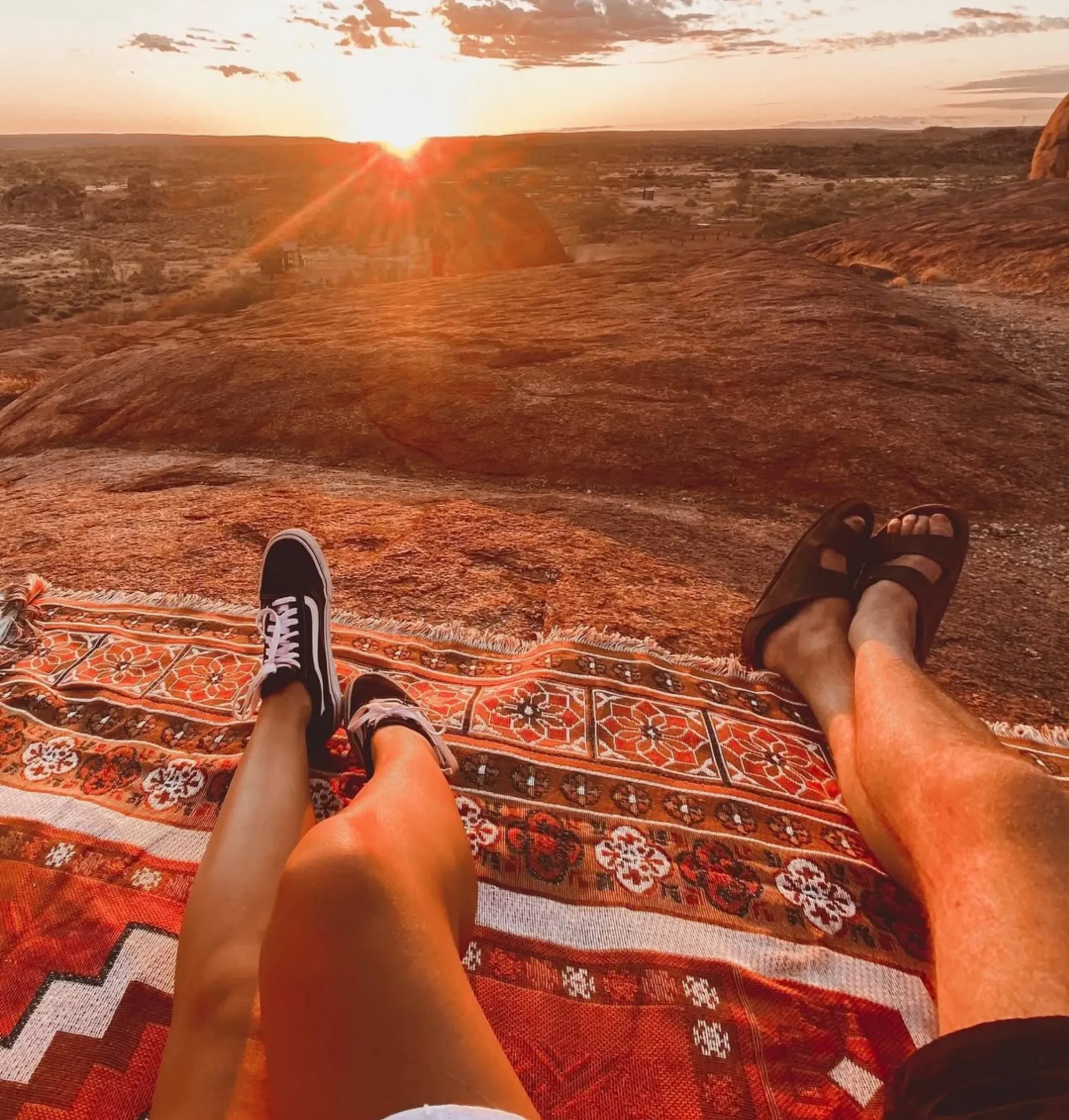
For the local Aboriginal communities Karlu Karlu is not just a natural landscape, it’s a sacred site. According to the Dreamtime stories the marbles are connected to the ancient ancestor Arrange or the Devil Man who created these formations while performing sacred acts. This cultural heritage is preserved and respected by the Warumungu, Kaytetye, Alyawarre and Warlpiri people who consider Karlu Karlu a spiritual site and Aboriginal significance. Items like the hair-string belt or clusters of hair used in cultural practices are also connected to the stories of this sacred site.
Devils Marbles Conservation Reserve
The Karlu Karlu / Devils Marbles Conservation Reserve is jointly managed by the traditional custodians and the Northern Territory Government. This conservation reserve protects the natural and cultural values of the area and allows visitors to access the site. It has walking tracks, informal self guided tracks and structured campgrounds so visitors can walk the rock formations and surrounds while respecting the site.
Things to Do
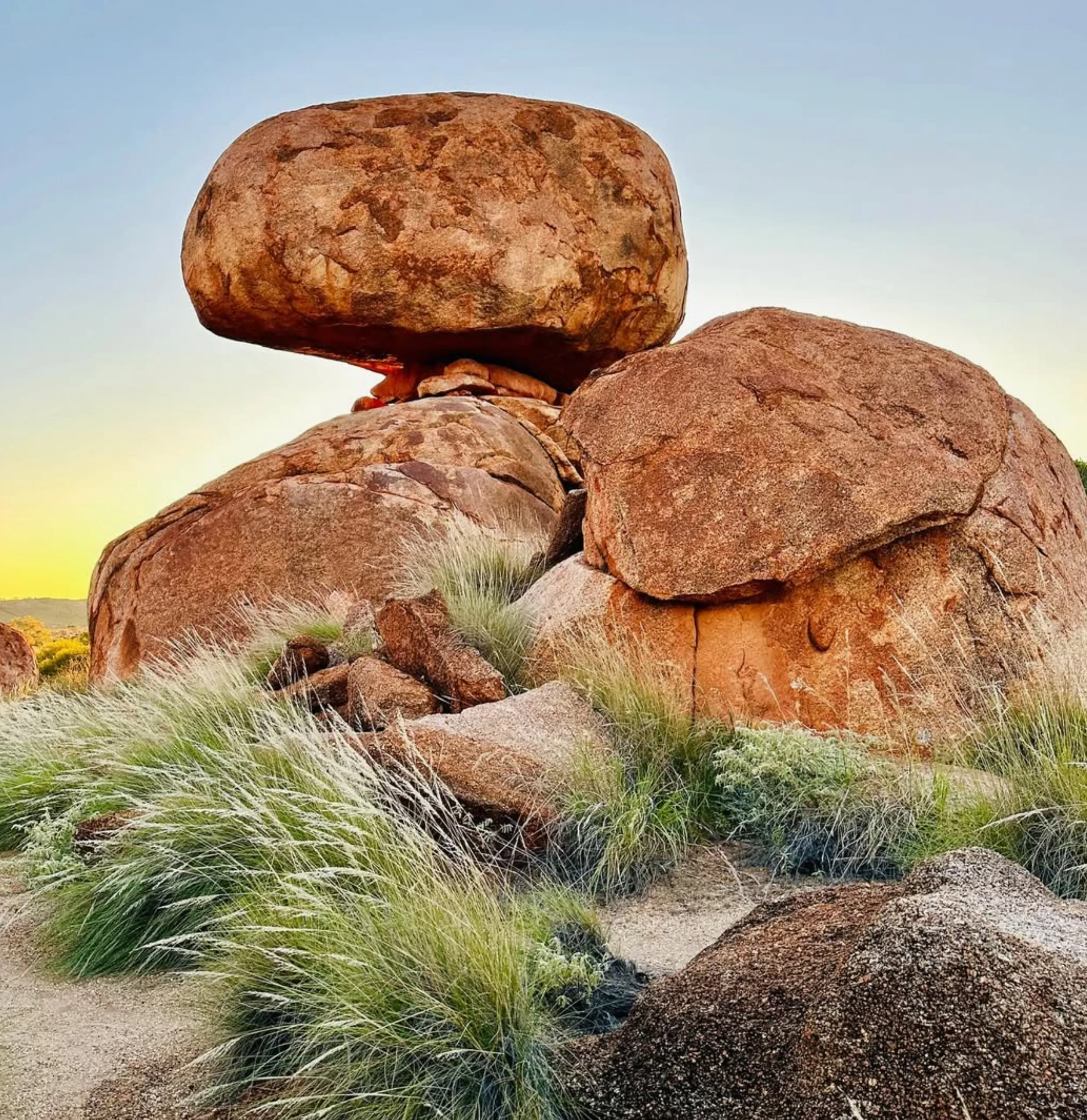
- Rock Features: Check out the ancient rock formations, balanced boulders, natural rock formations and rock outcrops that change colour depending on the time of day.
- Walking Tracks: Wander through the informal walking tracks and get up close and personal with the site’s beauty and learn about its geology and cultural significance.
- Camping in Parks: Camp at the camp ground which has basic facilities like drop toilets, sheltered picnic tables and spaces for camper trailer sites. Whether you’re tenting or bringing an RV you’ll love camping under the desert sky.
- Sunsets and Sunrises: See desert sunsets, dreamy mornings and an evening sky full of colour.
When to Visit
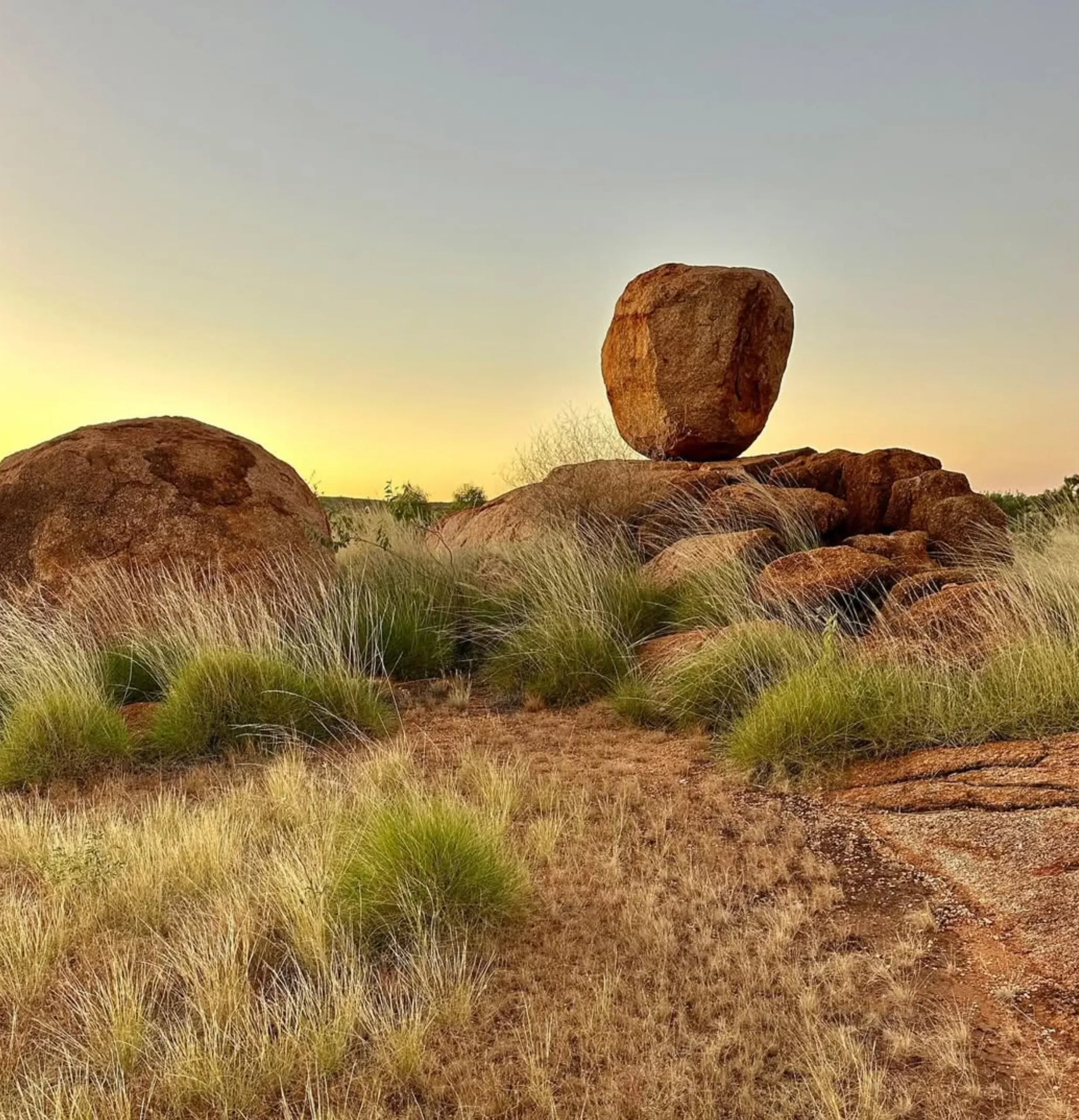
Best time to visit is during the cooler months (April to September) when the weather is perfect for walking and exploring. Avoid visiting during the hot summer or wet season as the gravel road and access road may be rough.
Getting to
Located on the Stuart Highway, 100km south of Tennant Creek and 400km north of Alice Springs, the site is accessible by bitumen roads. Whether you’re on a family trip, an Australian Uluru tours or just a comfortable trip the whole reserve has plenty to see.
Tips for your visit
- Bring plenty of water, sunscreen and sun safe clothing.
- Don’t climb the rocks as it’s a sacred site.
- Plan your visit around sunrise or sunset for the best views.
- Use the public toilets and other facilities at the campground host site.
The Wildlife and Features
The natural environment around Karlu Karlu is home to many wildlife species, fairy martins and other native animals. The Wildlife Service manages the environment for wildlife and tourism.
Nearby Tour Destinations to Explore
When you visit Karlu Karlu (Devils Marbles) you can also visit other amazing places in the Northern Territory.
1. Uluṟu-Kata Tjuṯa National Park
Further south is Uluṟu-Kata Tjuṯa National Park home to Uluṟu (Ayers Rock) and the domes of Kata Tjuṯa (The Olgas). These natural wonders offer a mix of beauty and cultural significance with guided tours that go deeper into their Aboriginal history.
2. Connells Lagoon Conservation Reserve
North of Karlu Karlu is Connells Lagoon Conservation Reserve a haven for rare plants and wildlife. A bird watchers and nature lovers paradise.
3. Tennant Creek
100km north of Karlu Karlu is the charming town of Tennant Creek, steeped in history including the Australian Overland Telegraph Line. Visitors can visit the Battery Hill Mining Centre and learn about the gold rush.
For a guided Ayers Rock tour and hassle free experience Autopia Tours has itineraries that include Karlu Karlu and other amazing places in the Northern Territory so you can have a complete and unforgettable experience.
Conclusion
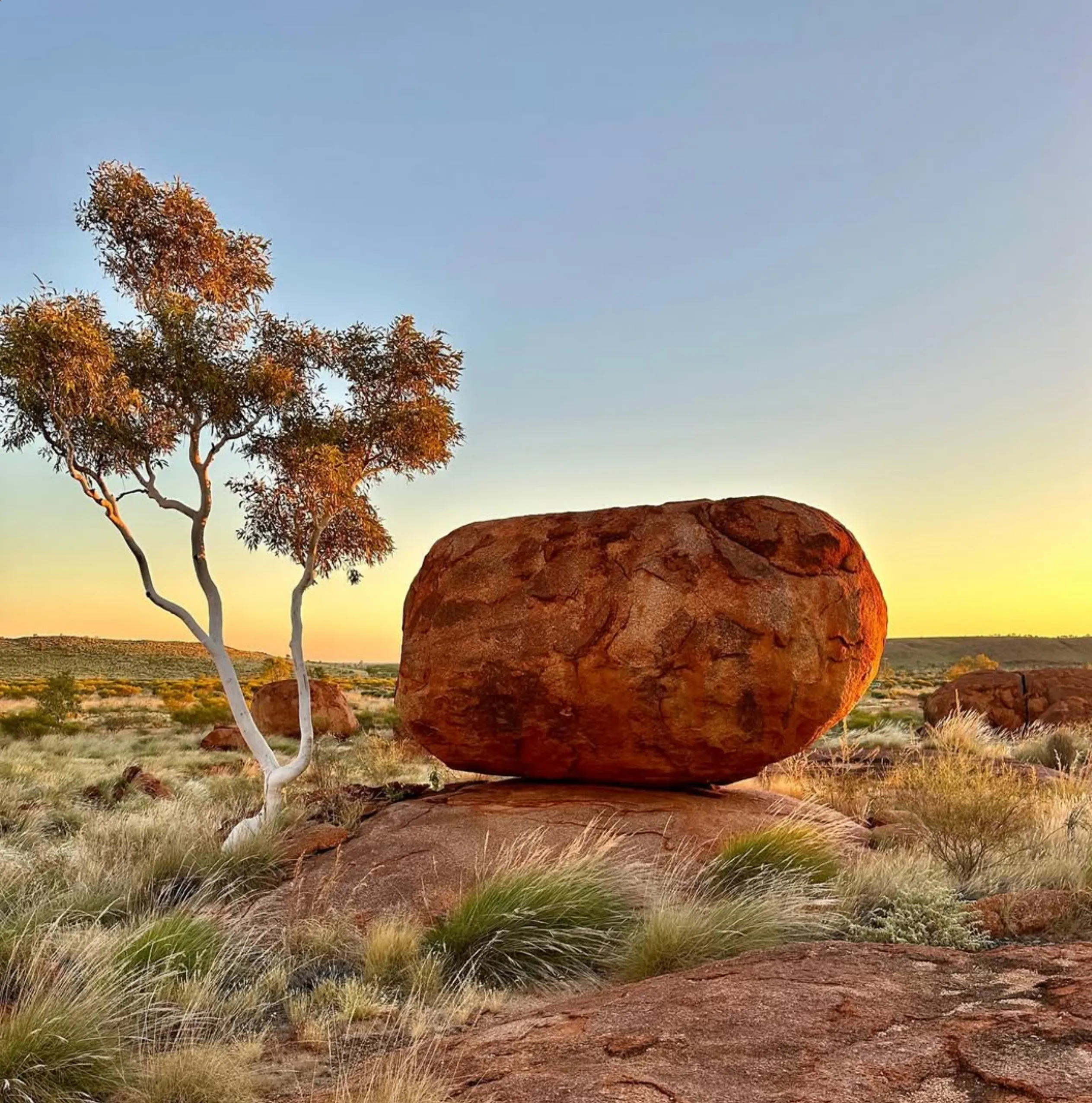
Karlu Karlu is for nature lovers, photographers and those wanting to connect with Australia’s cultural history. Whether you’re exploring the rock formations, having a family picnic or just gazing at the ancient granite boulders Karlu Karlu is a fascinating landscape that’s both peaceful and breathtaking. Don’t miss this outback icon on your next Uluru tour.
FAQ
What is the importance of Karlu Karlu to Aboriginal people?
Karlu Karlu is a sacred site associated with Dreamtime stories particularly the story of Arrange, the Devil Man.
Can you camp at Karlu Karlu?
Yes, there is a structured campsite with drop toilets, sheltered picnic tables and areas for camper trailers.
What time of day is best to visit Karlu Karlu?
Sunrise and sunset are the best times to visit as the rounded granite boulders reflect the changing light and make for a stunning sunset and dreamy morning.
Are there walking trails at Karlu Karlu?
Yes, there are informal self guided tracks and walking trails to explore the rock formations and surrounding areas.
Family friendly?
Yes! Camping ground and informal tracks. Perfect for a family trip.



